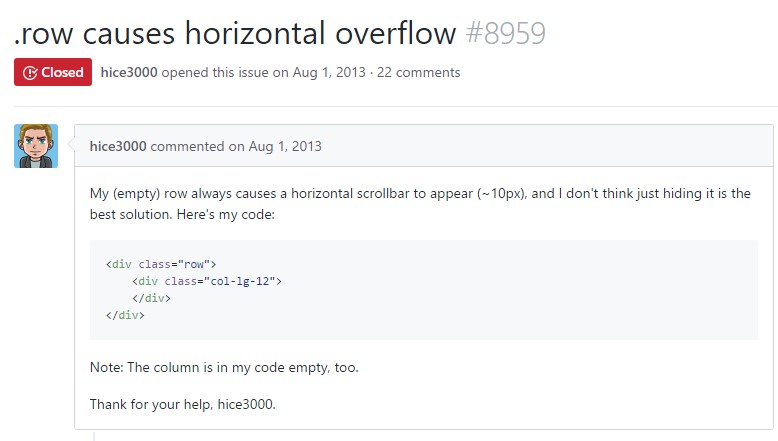Bootstrap Row Form
Introduction
Just what do responsive frameworks handle-- they provide us with a convenient and functioning grid environment to place out the content, ensuring that if we define it right so it will do the job and showcase appropriately on any sort of device despite the proportions of its display. And like in the construction each framework featuring the absolute most preferred one in its most current version-- the Bootstrap 4 framework-- contain just a couple of main elements that laid down and incorporated properly are able to help you produce practically any sort of appealing look to suit your design and view.
In Bootstrap, generally, the grid system gets constructed by three primary components that you have most probably already found around reviewing the code of several pages-- these are simply the
.container.container-fluid.row.col-Assuming that you're quite new to this entire thing and in some cases can ask yourself which was the right way these 3 ought to be placed within your markup right here is a simple trick-- everything you ought to always remember is CRC-- this abbreviation comes with regards to Container-- Row-- Column. And given that you'll briefly adapt spotting the columns as the inner feature it is actually not differ likely you would certainly mistake what the first and the last C indicates. ( click this link)
Couple of words regarding the grid system in Bootstrap 4:
Bootstrap's grid mode uses a variety of columns, containers, and rows to style as well as fix web content. It's created through flexbox and is totally responsive. Listed here is an example and an in-depth look at ways in which the grid interacts.
The mentioned above sample makes three equal-width columns on small, standard, large size, and extra sizable gadgets employing our predefined grid classes. Those columns are focused in the webpage together with the parent
.containerHere is actually the particular way it does work:
- Containers provide a means to focus your web site's elements. Use
.container.container-fluid- Rows are horizontal bunches of columns that make sure your columns are actually organized effectively. We apply the negative margin method regarding
.row- Content has to be installed in columns, and also simply just columns may possibly be immediate children of Bootstrap Row Css.
- Because of flexbox, grid columns without a established width is going to automatically layout with equivalent widths. For example, four instances of
.col-sm- Column classes signify the several columns you wish to utilize outside of the possible 12 per row. { In this way, on the occasion that you desire three equal-width columns, you can use
.col-sm-4- Column
widths- Columns possess horizontal
paddingmarginpadding.no-gutters.row- There are five grid tiers, one for every responsive breakpoint: all breakpoints (extra little), little, standard, large size, and extra large size.
- Grid tiers are based upon minimal widths, indicating they apply to that one tier plus all those above it (e.g.,
.col-sm-4- You have the ability to work with predefined grid classes as well as Sass mixins for extra semantic markup.
Be aware of the issues plus failures about flexbox, such as the inability to employ a number of HTML features as flex containers.
Though the Containers grant us fixed in max size or dispersing from edge to edge horizontal space on screen with slight convenient paddings across and the columns give the means to distributing the display area horizontally-- again with several paddings about the certain content providing it a territory to inhale we are simply heading to direct our attention to the Bootstrap Row feature and all of the good ways we have the ability to apply it for designating, aligning and distributing its contents using the brilliant brand-new to alpha 6 flexbox utilities which are really certain classes to incorporate to the
.row-sm--md-The ways to apply the Bootstrap Row Table:
Flexbox utilities may possibly be used for establishing the structure of the features positioned in a
.row.flex-row.flex-row-reverse.flex-column.flex-column-reverseRight here is just how the grid tiers infixes get employed-- for example to stack the
.row.flex-lg-column.flex-Together with the flexbox utilities related to a
.row.justify-content-start.justify-content-end.justify-content-center.justify-content between.justify-content-aroundThis counts also to the upright positioning that in Bootstrap 4 flexbox utilities has been simply addressed just as
.align-.align-items-start.row.align-items-end.align-items-centerA different opportunities are adjusting the objects by their baselines being adjusted the class is
.align-items-baseline.align-items-stretchAll of the flexbox utilities talked about thus far sustain separate grid tiers infixes-- include them right prior to the last word of the comparable classes-- such as
.align-items-sm-stretch.justify-content-md-betweenFinal thoughts
Here is actually how this vital however at first look not so adjustable element-- the
.rowLook at a number of youtube video guide about Bootstrap Row:
Related topics:
Bootstrap 4 Grid system: approved information

Multiple rows inside a row with Bootstrap 4

Another concern: .row
causes horizontal overflow
.row
